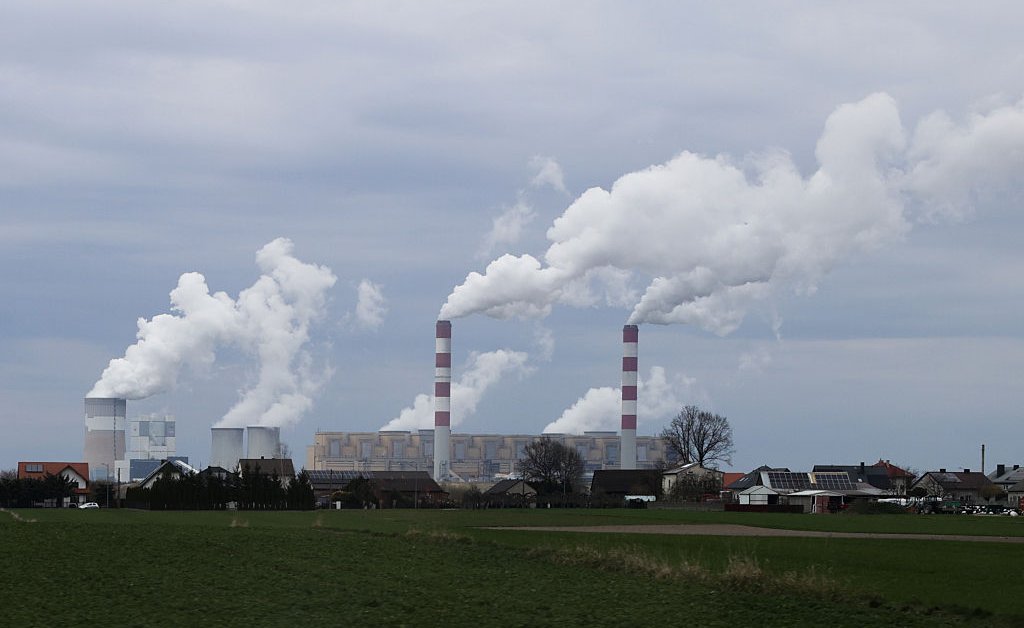Clean Air Saves Lives: The Impact Of Emission Cuts On Public Health

Welcome to your ultimate source for breaking news, trending updates, and in-depth stories from around the world. Whether it's politics, technology, entertainment, sports, or lifestyle, we bring you real-time updates that keep you informed and ahead of the curve.
Our team works tirelessly to ensure you never miss a moment. From the latest developments in global events to the most talked-about topics on social media, our news platform is designed to deliver accurate and timely information, all in one place.
Stay in the know and join thousands of readers who trust us for reliable, up-to-date content. Explore our expertly curated articles and dive deeper into the stories that matter to you. Visit Best Website now and be part of the conversation. Don't miss out on the headlines that shape our world!
Table of Contents
Clean Air Saves Lives: The Impact of Emission Cuts on Public Health
Air pollution is a silent killer, responsible for millions of premature deaths globally each year. But the good news is, reducing emissions isn't just good for the planet – it's a life-saving measure with profound impacts on public health. This article explores the undeniable link between cleaner air and improved health outcomes, highlighting the significant benefits of emission reduction initiatives.
The Deadly Toll of Air Pollution:
The World Health Organization (WHO) estimates that air pollution contributes to over 7 million premature deaths annually. This isn't just a problem in developing countries; even developed nations face significant health burdens due to poor air quality. Exposure to pollutants like particulate matter (PM2.5), ozone, and nitrogen dioxide is linked to a range of serious health problems, including:
- Respiratory illnesses: Asthma, bronchitis, and chronic obstructive pulmonary disease (COPD) are exacerbated by air pollution, leading to hospitalizations and reduced quality of life.
- Cardiovascular diseases: Air pollution increases the risk of heart attacks, strokes, and other cardiovascular diseases, contributing significantly to mortality rates.
- Cancer: Long-term exposure to certain air pollutants is linked to an increased risk of lung cancer and other cancers.
- Neurological problems: Studies suggest a correlation between air pollution and neurological disorders, including dementia and cognitive decline.
- Increased risk of premature birth and low birth weight: Pregnant women exposed to high levels of air pollution are at increased risk of complications.
The Positive Impact of Emission Cuts:
The good news is that we have the power to change this grim picture. Significant reductions in emissions, achieved through various strategies, directly translate to improved public health outcomes. Examples include:
- Transitioning to renewable energy: Shifting away from fossil fuels towards solar, wind, and other renewable energy sources drastically reduces air pollution from power generation. Learn more about the benefits of renewable energy [link to a reputable source about renewable energy].
- Improving vehicle emission standards: Stricter regulations on vehicle emissions, coupled with the rise of electric vehicles, contribute to cleaner air in urban areas. Read more about electric vehicle adoption [link to a reputable source about electric vehicles].
- Investing in public transportation: Encouraging the use of public transportation reduces the number of vehicles on the road, leading to lower emissions and improved air quality.
- Promoting sustainable urban planning: Designing cities with green spaces, pedestrian-friendly infrastructure, and efficient transportation systems can significantly impact air quality.
Quantifying the Benefits:
Numerous studies have demonstrated the tangible benefits of emission reduction on public health. For instance, research has shown that even modest improvements in air quality can lead to significant decreases in respiratory hospitalizations and mortality rates. These improvements translate not only to saved lives but also to reduced healthcare costs and increased economic productivity.
The Future of Clean Air Initiatives:
The fight for cleaner air is far from over, but the progress made demonstrates the effectiveness of coordinated efforts. Continued investment in research, stricter regulations, and public awareness campaigns are crucial to further reducing emissions and protecting public health. Individual actions, such as choosing sustainable transportation options and reducing energy consumption, also play a vital role.
Call to Action:
Clean air is a fundamental human right. By supporting policies that prioritize emission reductions and adopting sustainable practices in our daily lives, we can collectively contribute to a healthier and more sustainable future for all. Learn more about how you can get involved in your community's efforts to improve air quality [link to a relevant local or national organization].

Thank you for visiting our website, your trusted source for the latest updates and in-depth coverage on Clean Air Saves Lives: The Impact Of Emission Cuts On Public Health. We're committed to keeping you informed with timely and accurate information to meet your curiosity and needs.
If you have any questions, suggestions, or feedback, we'd love to hear from you. Your insights are valuable to us and help us improve to serve you better. Feel free to reach out through our contact page.
Don't forget to bookmark our website and check back regularly for the latest headlines and trending topics. See you next time, and thank you for being part of our growing community!
Featured Posts
-
 The Time 100 A Deep Dive Into The 2025 Influencers
May 10, 2025
The Time 100 A Deep Dive Into The 2025 Influencers
May 10, 2025 -
 Nyt Spelling Bee Answers And Clues For May 8th Puzzle 431
May 10, 2025
Nyt Spelling Bee Answers And Clues For May 8th Puzzle 431
May 10, 2025 -
 Understanding The New Us Uk Trade Agreement A Comprehensive Guide
May 10, 2025
Understanding The New Us Uk Trade Agreement A Comprehensive Guide
May 10, 2025 -
 New Pope Leo Inaugural Mass Reflects Weight Of Papacy
May 10, 2025
New Pope Leo Inaugural Mass Reflects Weight Of Papacy
May 10, 2025 -
 Karen Read Murder Case Key Developments From Troopers Testimony
May 10, 2025
Karen Read Murder Case Key Developments From Troopers Testimony
May 10, 2025
